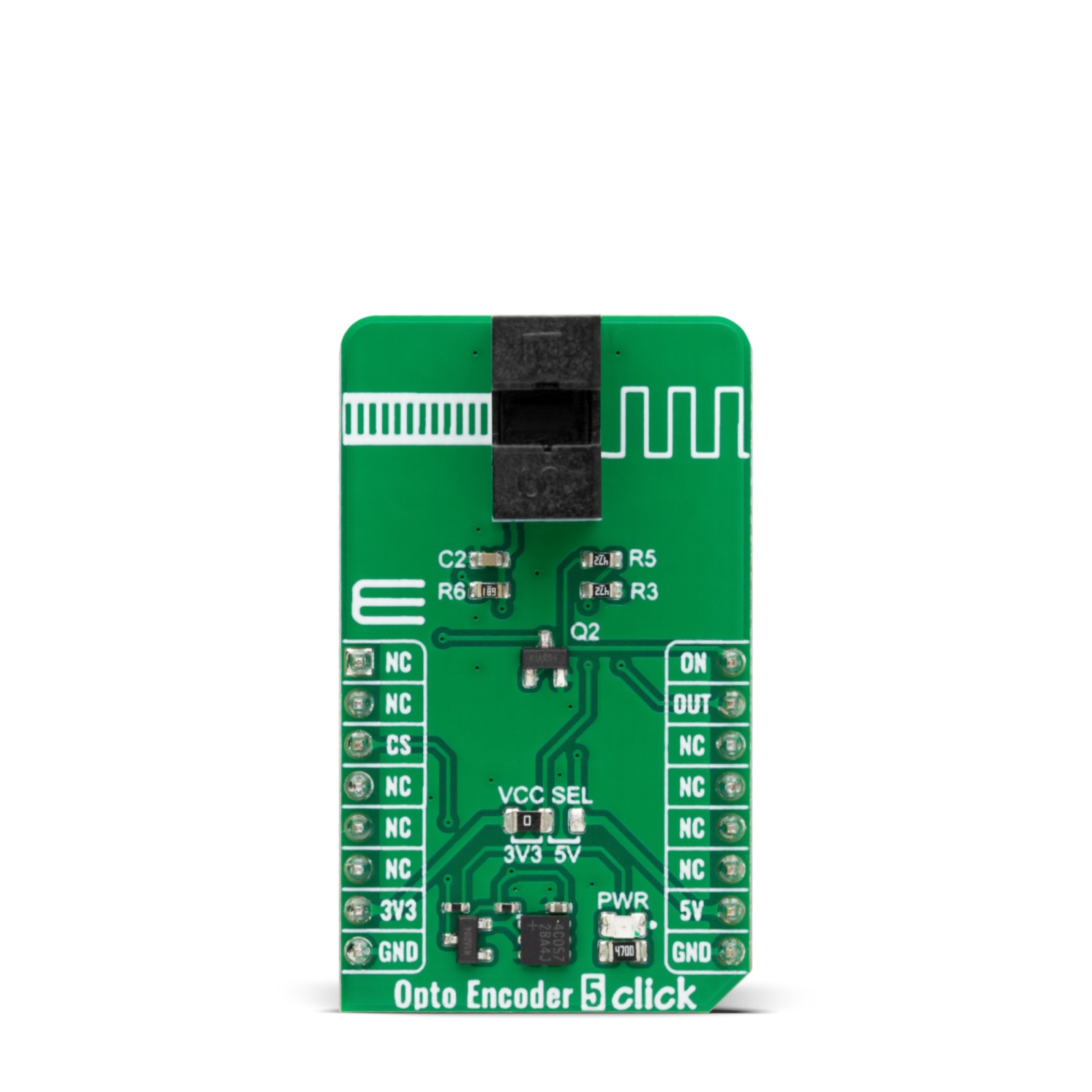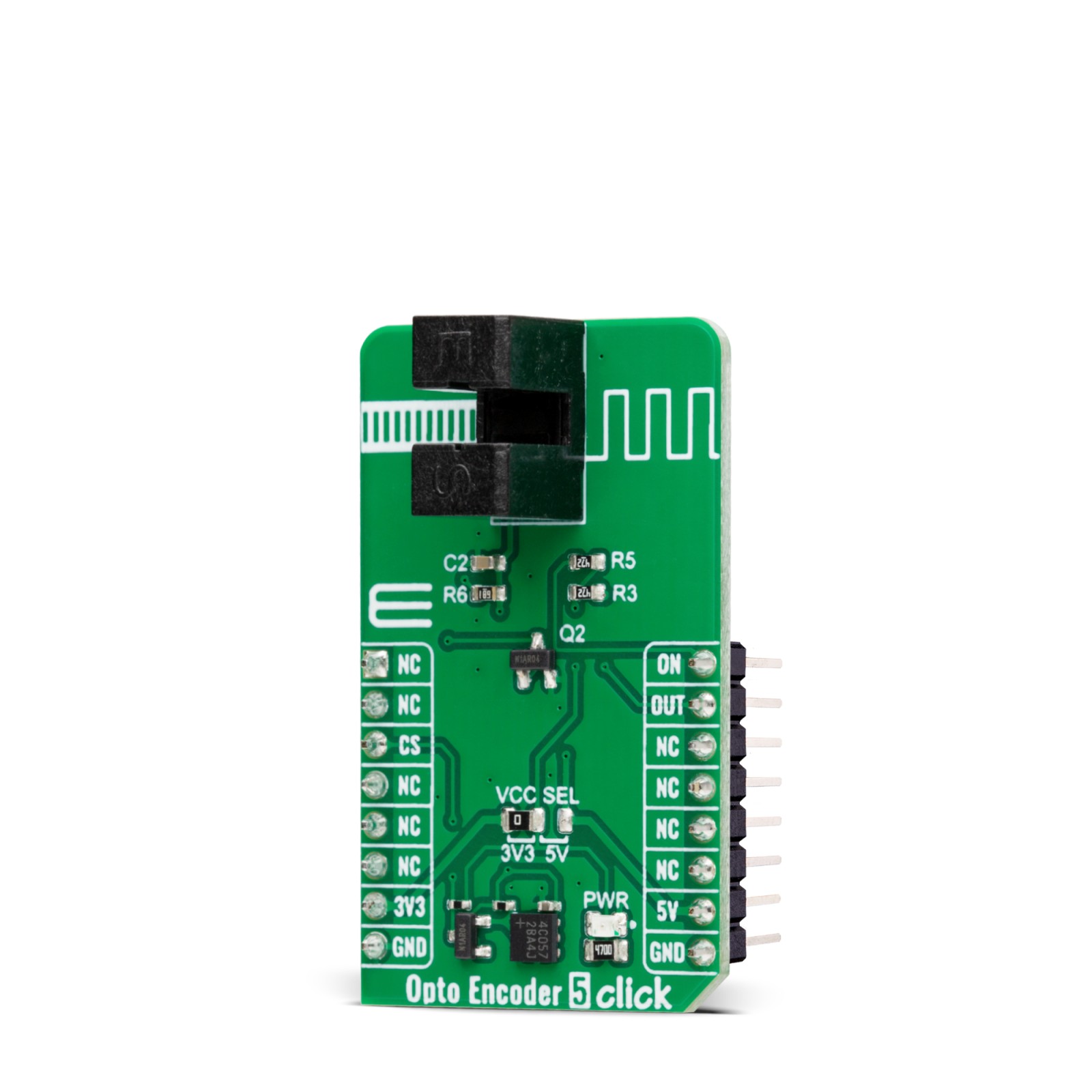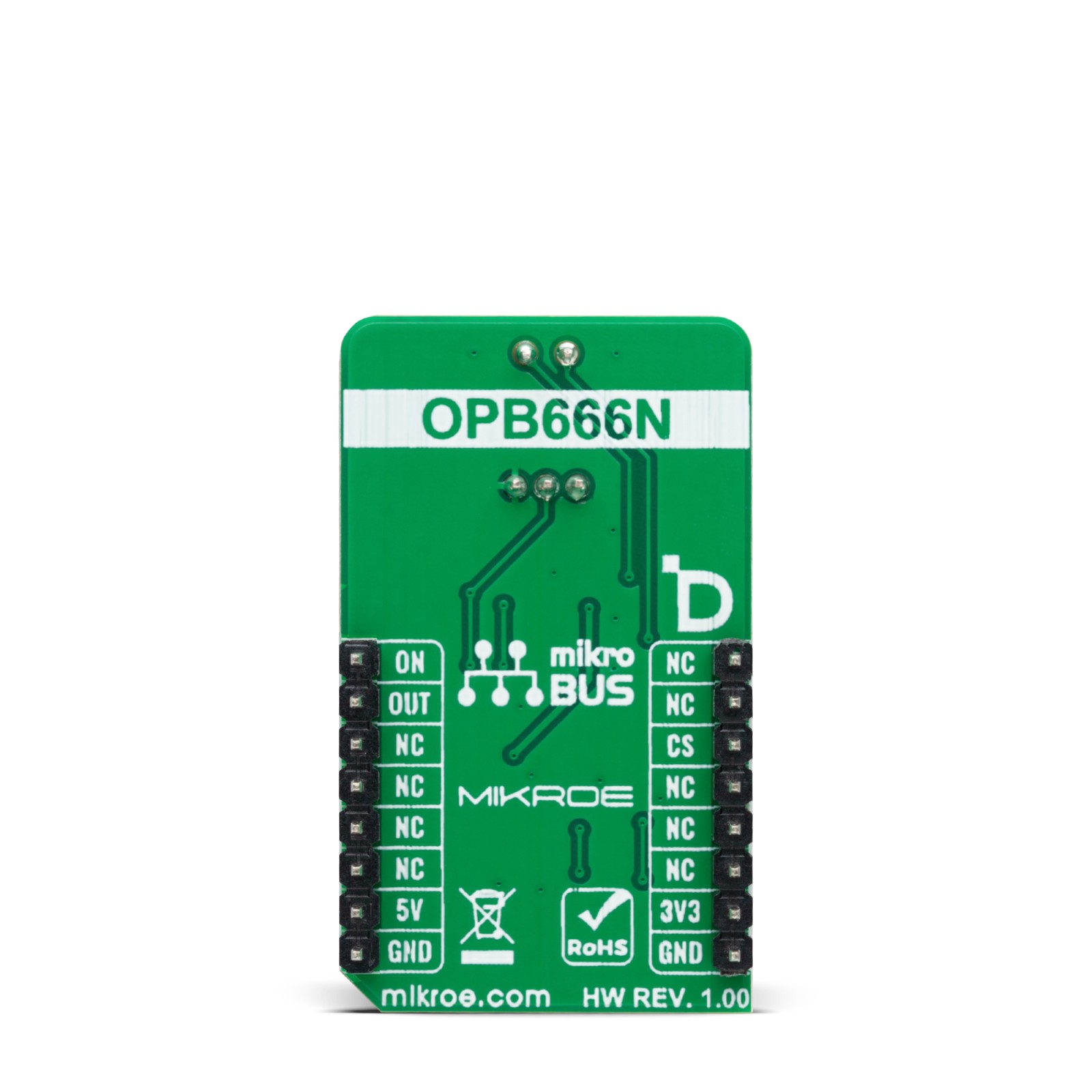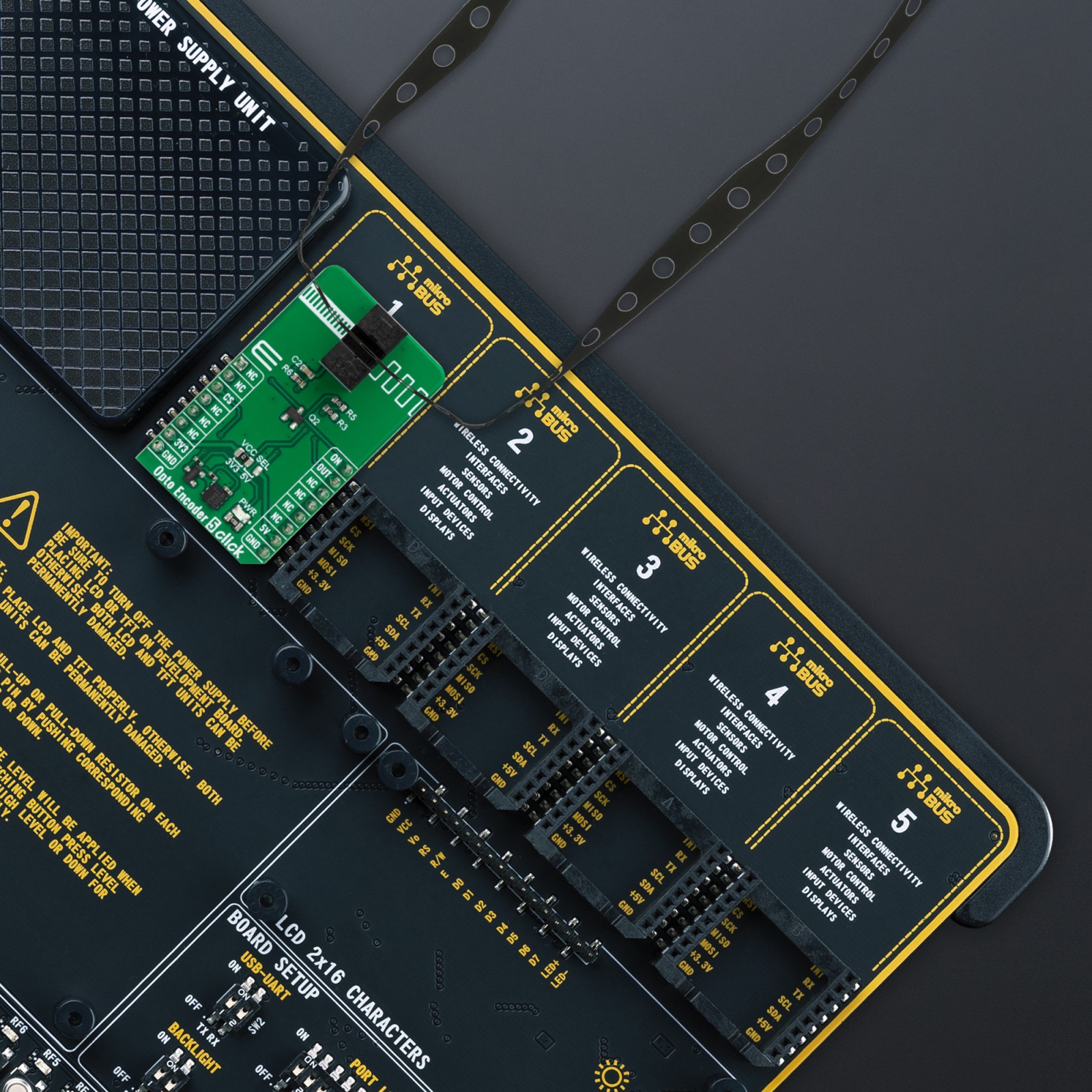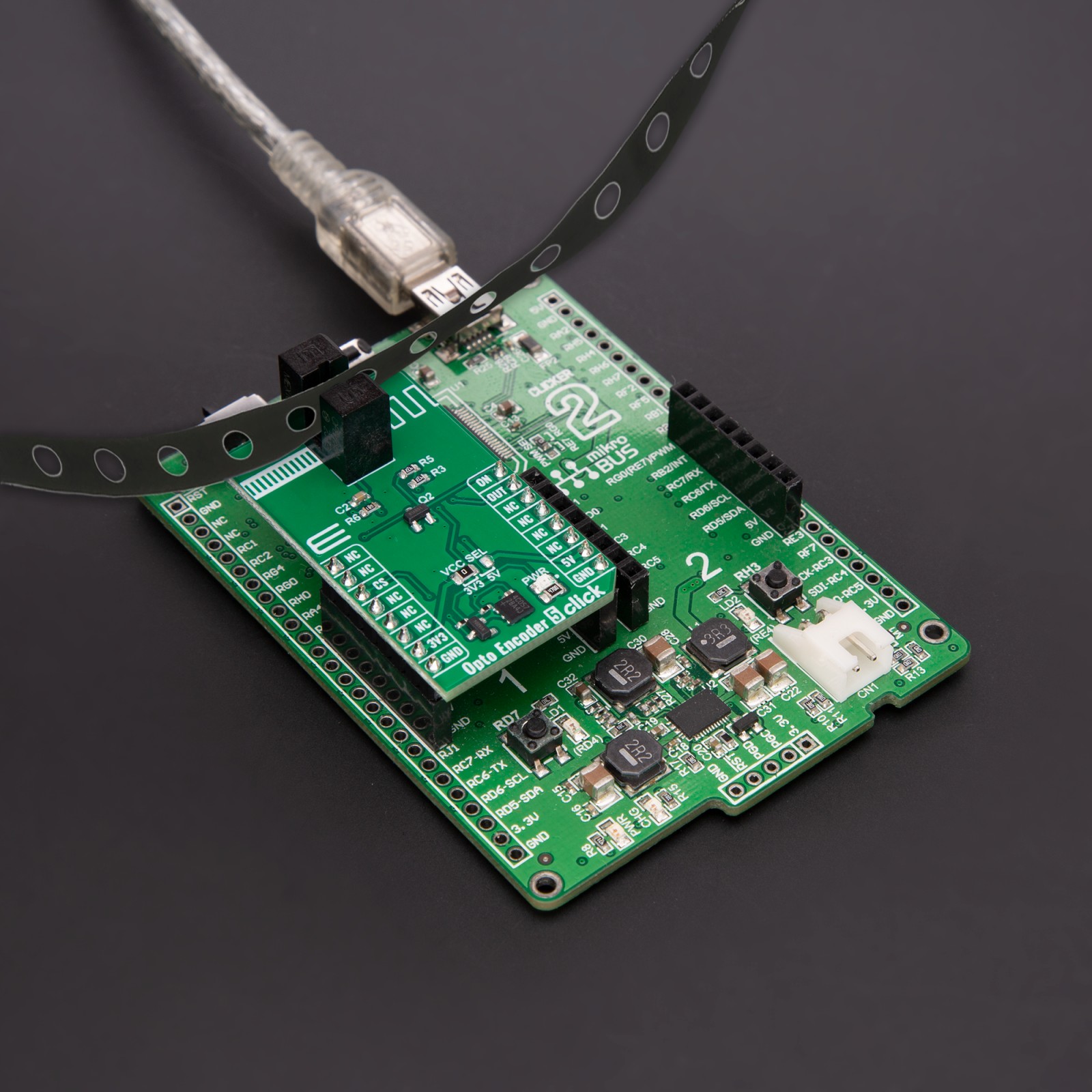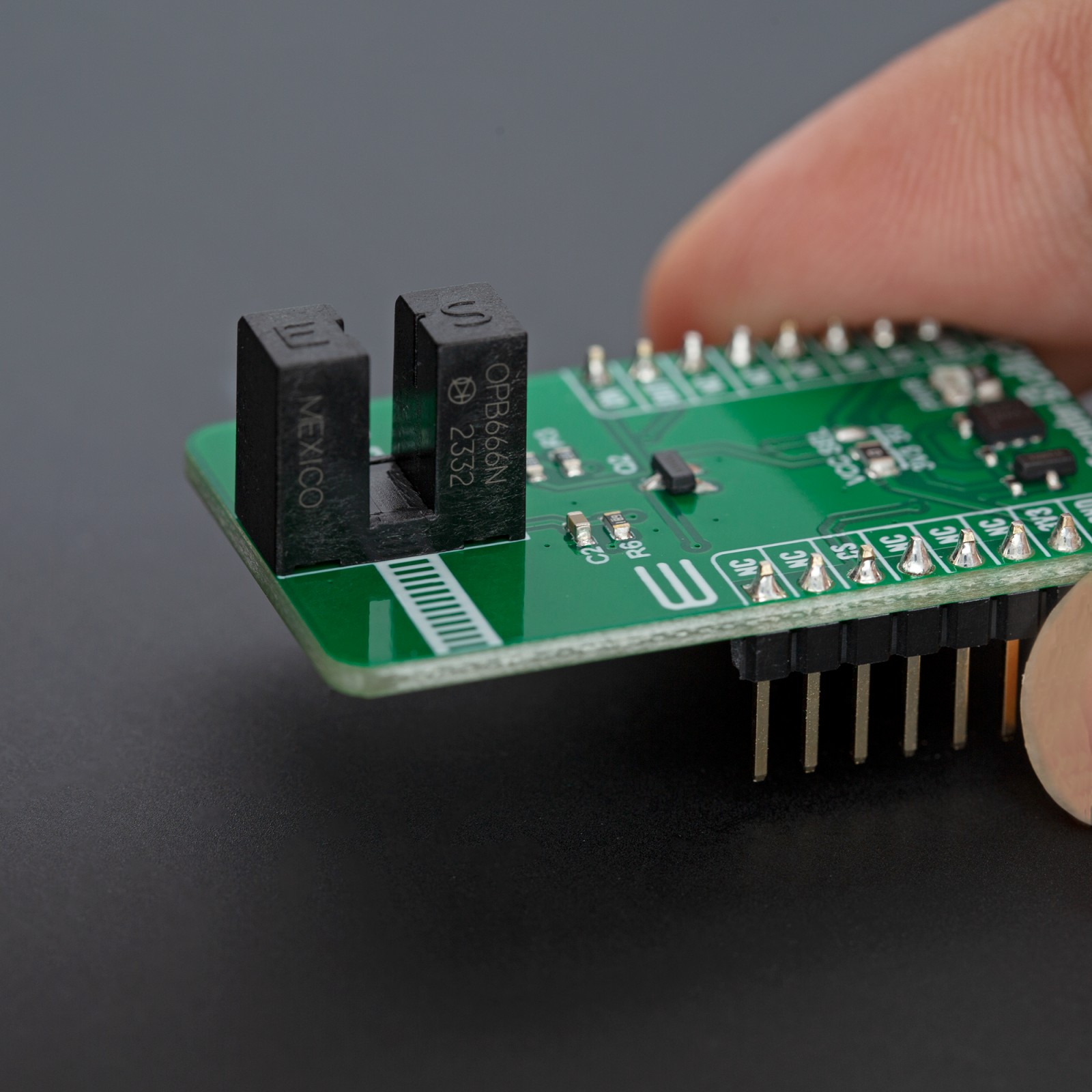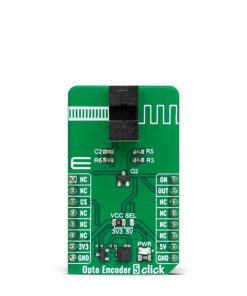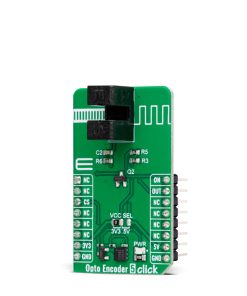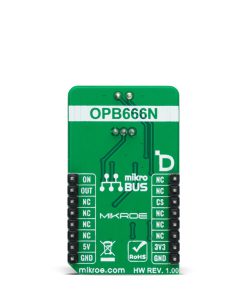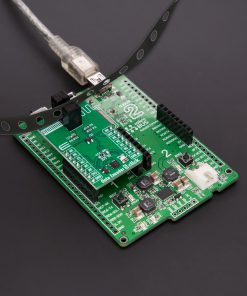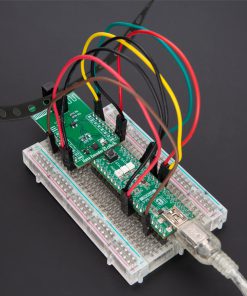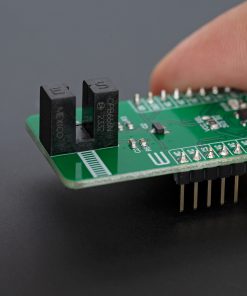Opto Encoder 5 Click
R370.00 ex. VAT
Opto Encoder 5 Click is a compact add-on board that offers non-contact switching with unparalleled accuracy and precision. This board features the OPB666N, a Photologic® slotted optical switch from TT Electronics, ensuring top-notch performance and reliability. It integrates an 890nm infrared LED and a monolithic integrated circuit with a photodiode, linear amplifier, and Schmitt trigger, all powered effectively by a 5V supply from the mikroBUS™ power rail. The board features an NPN open-collector output configuration and is TTI/LST TL compatible, highlighting its ease of use and versatility. With the ability to operate on both 3.3V and 5V logic levels, it caters to a wide range of microcontrollers. Its applications are diverse, suitable for replacing mechanical switches, serving as a speed indicator, mechanical limit indicator, and edge sensing in sectors demanding high precision and reliability.
Opto Encoder 5 Click is fully compatible with the mikroBUS™ socket and can be used on any host system supporting the mikroBUS™ standard. It comes with the mikroSDK open-source libraries, offering unparalleled flexibility for evaluation and customization. What sets this Click board™ apart is the groundbreaking ClickID feature, enabling your host system to seamlessly and automatically detect and identify this add-on board.
Stock: Lead-time applicable.
| 5+ | R351.50 |
| 10+ | R333.00 |
| 15+ | R314.50 |
| 20+ | R302.66 |

